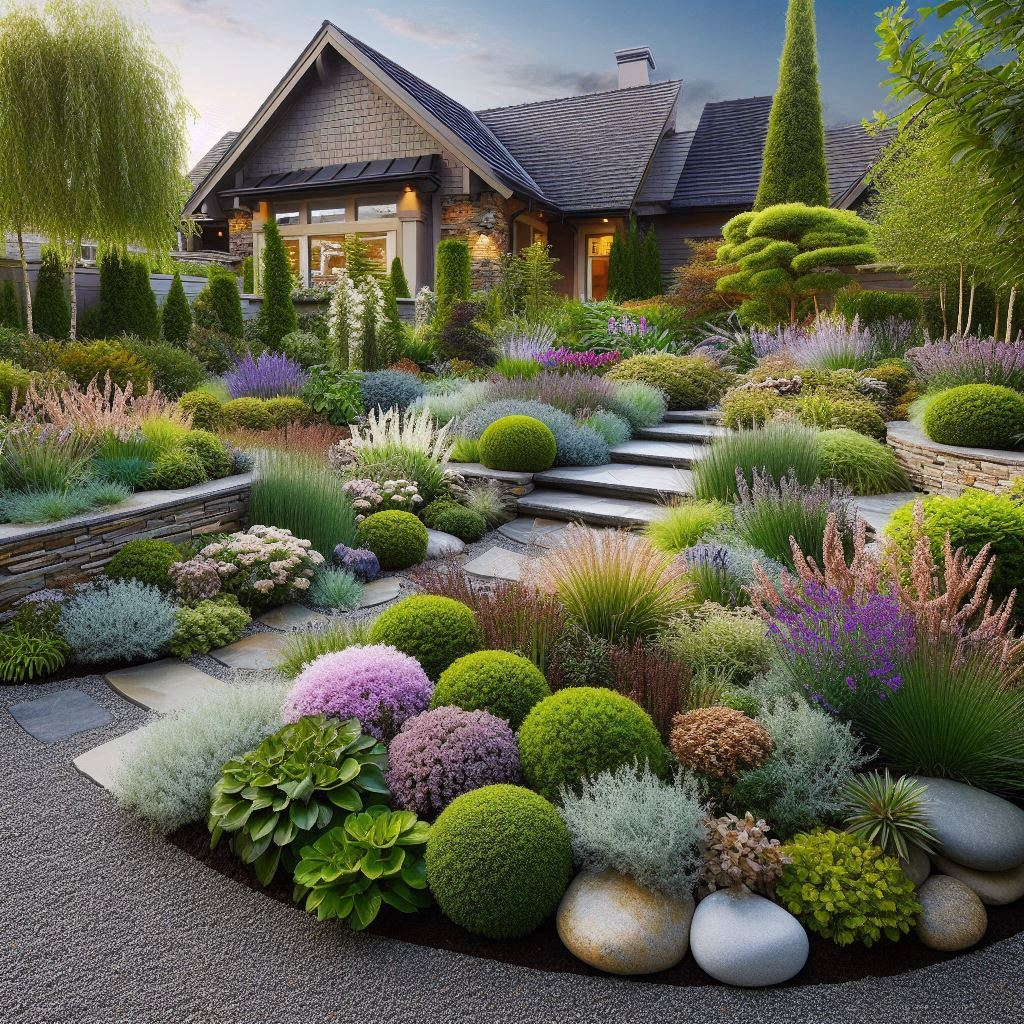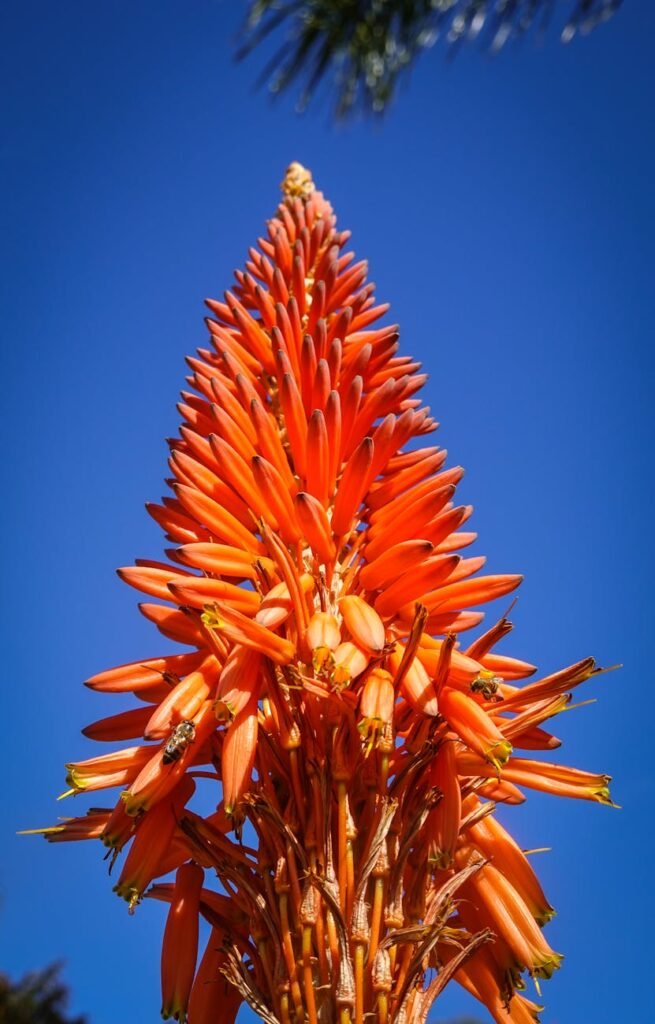Easy-Peasy Flowerbeds
Why Low-Maintenance Perennials Rock
Got a busy life or just don’t want to spend all your free time gardening? Low-maintenance perennials are your new best friends. These plants come back year after year, saving you the hassle of replanting every season. Imagine a garden that keeps blooming without you breaking a sweat.
| Benefit | Why It’s Awesome |
|---|---|
| Time-Saving | Once they’re in, they pretty much take care of themselves. |
| Cost-Effective | Spend less on plants because they keep coming back. |
| Eco-Friendly | Great for saving water and being kind to Mother Earth. |
| Year-Round Beauty | Different plants bloom at different times, so there’s always something pretty to look at. |
Pick the right perennials, and you’ll have a gorgeous, low-effort garden. Perfect for drought-resistant flowerbed ideas and heat-tolerant flowerbed plants.
Planning Your Chill Garden
The secret to a no-fuss flowerbed? Good planning. Spend a little time upfront picking the right plants and setting things up, and you’ll thank yourself later (Gingham Gardens). Here’s how to get started:
- Check Your Space: Look at how much sun, shade, and moisture your garden gets.
- Pick the Right Plants: Choose perennials that love your garden’s conditions.
- Smart Design: Group plants with similar needs together.
- Watering Made Easy: Think about a drip irrigation system to keep things watered without lifting a finger.
- Mulch Magic: Use mulch to keep the soil moist and the weeds away.
- Seasonal Stars: Mix early, mid, and late bloomers for year-round color.
Follow these steps, and you’ll have a garden that’s both stunning and low-maintenance. For more tips, check out our guide on xeriscape flowerbed design.
Sure, setting up a low-maintenance flowerbed takes a bit of work at first, but it’s totally worth it. You’ll end up with a beautiful garden that doesn’t need much attention, leaving you more time to kick back and enjoy your outdoor space.
Picking Perennials for Low-Maintenance Gardens
Want a garden that looks amazing without all the fuss? Here are some top-notch perennials that’ll keep your flowerbeds popping with color and life, minus the hard work.
Coneflower: The Vibrant Native
Coneflowers are the rockstars of the garden. These native beauties bloom from early summer to fall and come in a rainbow of colors—purple, white, yellow, orange, and red. They’re butterfly and hummingbird magnets, so your garden will be buzzing with life. For more on drought-resistant flowerbeds, check out our drought-resistant flowerbed ideas.
| Feature | Details |
|---|---|
| Bloom Time | Early Summer to Fall |
| Colors | Purple, White, Yellow, Orange, Red |
| Height | 2-4 feet |
| Sun Exposure | Full Sun |
Hostas: Shade’s Best Friend
Got a shady spot? Hostas are your go-to. They come in all sorts of shapes, sizes, and colors, and they sport spikes of lavender or white blooms that hummingbirds love. Perfect for adding some flair to the darker corners of your garden.
| Feature | Details |
|---|---|
| Bloom Time | Summer |
| Colors | Green, Blue, Variegated |
| Height | 1-3 feet |
| Sun Exposure | Shade to Part Shade |
Peonies: Spring’s Showstoppers
Peonies are the drama queens of spring. Their big, fragrant blooms come back year after year with almost no effort. Think pink, coral, white, red, cream, and even bicolor. They’re the gift that keeps on giving.
| Feature | Details |
|---|---|
| Bloom Time | Spring |
| Colors | Pink, Coral, White, Red, Cream, Bicolor |
| Height | 2-3 feet |
| Sun Exposure | Full Sun to Part Shade |
Daylilies: The Easy-Going Beauties
Daylilies are the chill gardeners’ dream. They thrive in full sun to part shade and don’t mind a bit of neglect. Some varieties even give you a second round of blooms. They can grow up to 3 feet tall and 2 feet wide, making them perfect for filling up space.
| Feature | Details |
|---|---|
| Bloom Time | Summer |
| Colors | Various |
| Height | 1-3 feet |
| Sun Exposure | Full Sun to Part Shade |
Sedums: The Drought Busters
Sedums are the superheroes of dry gardens. They come in all shapes and sizes and can handle full sun to part shade. Blooming from late summer to fall, they’re a hit with pollinators thanks to their nectar-rich flowers.
| Feature | Details |
|---|---|
| Bloom Time | Late Summer to Fall |
| Colors | Various |
| Height | 0.5-3 feet |
| Sun Exposure | Full Sun to Part Shade |
For more water-wise gardening tips, check out our water-wise flowerbed ideas. These perennials will help you create a stunning, low-maintenance garden that practically takes care of itself.
Easy Tips for a Gorgeous, Low-Maintenance Garden
Who says you need to break your back to have a beautiful garden? With a few smart strategies, you can keep your flowerbeds looking fabulous with minimal effort. Here’s how to make your garden practically take care of itself.

Watering Without the Hassle
Watering can be a real chore, but it doesn’t have to be. Here’s how to make it a breeze:
- Drip Irrigation: This system waters plants right at the roots, saving water and time. Set it up with a timer, and you can even go on vacation without worrying about your garden drying out.
- Soaker Hoses: These hoses are perfect for winding through your flowerbeds. They slowly release water, keeping your plants happy without you having to lift a finger.
Keep Weeds at Bay
Weeds are the enemy, but you can win the battle with these simple tricks:
- Pre-Watering: Wet soil makes it easier to pull weeds out by the roots. Give the area a good soak before you start weeding (Gecko Green).
- Mulching: A thick layer of mulch (2-3 inches) blocks sunlight, keeps moisture in, and stops weeds in their tracks. Just make sure to weed first and water after laying down the mulch.
Mulch Magic
Mulch is your garden’s best friend. It keeps the soil moist, fights off weeds, and even feeds your plants as it breaks down.
- How to Use Mulch: Spread a 2-3 inch layer around your plants. This helps keep the soil cool and moist while preventing weeds.
- Best Mulch Types: Organic options like wood chips, straw, or compost are great. They add nutrients to the soil as they decompose.
Feed Your Flowers Right
Fertilizing your perennials can make a world of difference. Here’s how to do it right:
- Slow-Release Fertilizers: These are perfect for new plants. They slowly release nutrients, so you don’t have to fertilize as often (Gingham Gardens).
- Liquid Fertilizers: Quick and easy, products like Miracle Gro give your plants a fast nutrient boost. They’re especially good for containers and annuals.
| Fertilizer Type | How to Apply | How Often |
|---|---|---|
| Slow-Release | Mix into soil at planting | Every 6 months |
| Liquid | Dilute in water and apply to soil | Every 2 weeks |
Follow these tips, and you’ll have a stunning, low-maintenance garden that practically takes care of itself. For more ideas on keeping your garden beautiful and sustainable, check out our articles on water-wise flowerbed ideas and xeriscape flowerbed design.

My name is Michelle Warren, and I’m the founder of Peaceful Gardening. As a 10-year breast cancer survivor, I’ve discovered the profound therapeutic power of gardening. This journey has not only helped me recover but has also become my passion and a source of ongoing peace and joy.
Peaceful Gardening was born from my desire to share the healing benefits of gardening with others. Whether you’re facing health challenges, dealing with stress, or simply looking to connect more deeply with nature, this space is for you.
Over the past decade, I’ve cultivated not just plants, but a deep understanding of how gardening can positively impact mental health. I’ve worked with local community gardens, led workshops on mindful gardening practices, and collaborated with mental health professionals to develop gardening-based stress reduction programs.
Peaceful Gardening was born from my desire to share the healing benefits of gardening with others. Whether you’re facing health challenges, dealing with stress, or simply looking to connect more deeply with nature, this space is for you.
Here, you’ll find evidence-based advice on using gardening as a tool for mindfulness, stress relief, and emotional healing. I share personal stories, practical tips, and scientifically-backed information on how to create your own therapeutic garden space, no matter the size of your yard or balcony.
My mission is to help you discover the joy, peace, and healing that comes from nurturing plants and connecting with nature. Join me in exploring how the simple act of tending to a garden can transform your mental and emotional wellbeing.
Welcome to Peaceful Gardening – let’s grow together towards better mental health!”

